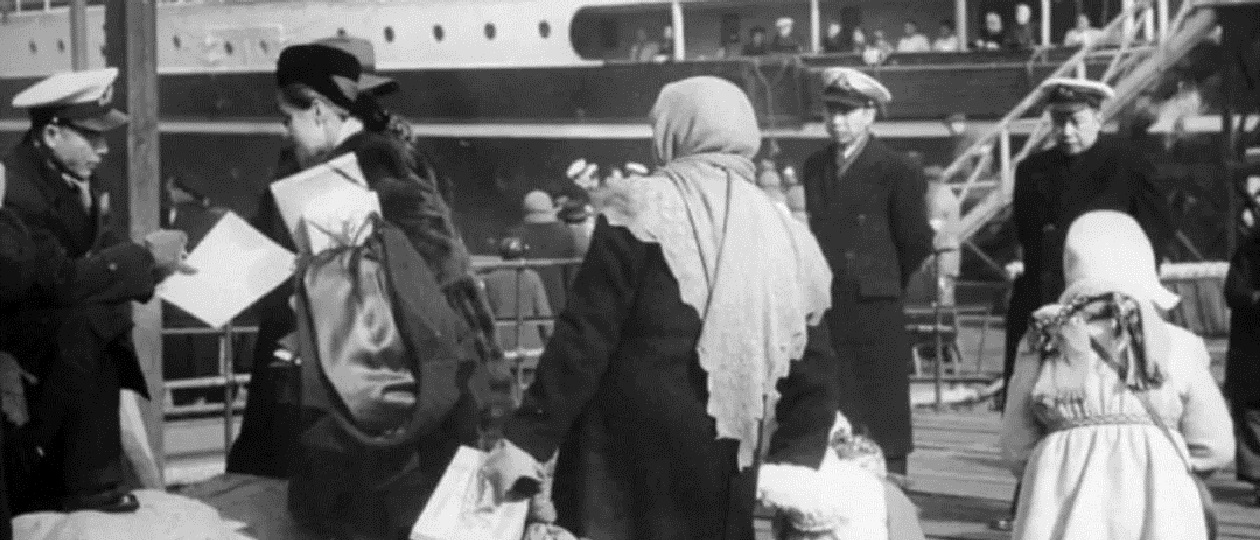
For a long time I wanted to talk about little-studied events like conspiracies in the army, terrorism and the like, so I decided to publish several essays on the history of Japan in the 1920s and 30s. Of course, this will affect politics, economics, sociology, and even culture.
I thought for a long time where to start, but after discussing with my friends, I decided first of all to talk about the Russian emigration, which I am currently researching in Tokyo.
So, the first Russian consulate in Japan was opened in 1858-1860 in the city of Hakodate (函館市) in the “governorship of the northern sea”, as Hokkaido (北海道) can be translated. It was from there that the spread of Orthodoxy among the Japanese began. By the way, 27 graves of Russian emigrants are still preserved there. Later, already in the 1910s, a small group of Old Believers (staroobryadcev) arrived there.
However, the main influx of emigrants from Russia began in 1917-1922. Basically, these were former White Guards: remains of Kolchak Semyonov armies and Merkulovites, as well as members of their families.
If, after the February Revolution, Russians returned from the USA through Japan to Russia, then after the defeat of the Whites and the establishment of Soviet power in the Far East, people were already traveling precisely in order to stay in the Land of the Rising Sun.
Previously, to enter the country, Russian travelers had to present a passport and ¥250 per person (this was the price of a ticket in a third-class cabin, which was usually used by transit passengers). When it turned out that no one was particularly eager to leave, the rules became tougher.
On February 17, 1920, the Japanese authorities introduced the requirement of the “Present Money System”, which allowed entry only to those who could either present ¥1,500 per person (the then minimum subsistence level) or present a letter of guarantor.
The first was difficult for our poor compatriots, and the second was almost impossible.
Therefore, the ships were extremely overloaded with refugees, some by 39, 56 and even 149 times, according to the calculations of the historian and writer Viktor Petrov (see his article “Russian Shanghai”, Problems of the Far East, 1991, number 4). In the country then, according to the report of the Ministry of Internal Affairs of Japan, as of September 1, 1926, only 2356 refugees settled. Moreover, 773 of them lived in Japan itself, and the rest lived in subject territories: in Korea, the Canton region and Taiwan.
Since it was extremely difficult to find work, and prices rose like mushrooms after the rain, other refugees then moved to France, South America and China.
As the émigré newspaper Delo Rossii wrote (Number 3 of March 31, 1920): “the high cost is growing and large funds are needed to even modestly exist here.”
To a large extent, the xenophobia of the Japanese also played a role. The secret report “Gai Hi Otsu number 767” ordered to pay special attention to persons of Jewish nationality and in general all suspicious ones, since “they could form the center of the Bolshevik movement in Japan.”
In such an environment, the Japanese authorities, namely Colonel Ando personally, decided to send Russian refugees straight to the Korean port of Wonsan, since, according to the agreement of August 22, 1910, Korea at that time was part of the Japanese Empire. And on November 1, 1922, ships with 7504 passengers on board landed there.
The governor-general of Korea was a little confused by such an influx of emigrants. He even had no idea then who it was and what they were running from.
Like most stupid officials, he immediately made the only decision that came to mind that works flawlessly in such situations: “Do not let them in!” And Russian refugees were forbidden to go ashore, or rather, the governor’s order read: “We do not take too active part in this matter, and, most likely, by sending these refugees abroad, we will force them to go home – to Vladivostok and Transbaikalia.”
On November 21, 1922, 1970 Russian sailors and their families decided to leave for the Philippines.
But still, there remained, firstly, the Far Eastern group of Cossacks, headed by Lieutenant General Faddey (Fyodor) Lvovich Glebov. And, secondly, the Ural-Jäger detachment under the command of General Lebedev.
Their total number was 5572 people, of which 3085 were military and 2487 were civilians.
Seeing that it was not so easy to get rid of the Russians, the government decided to create at least some conditions for them to live. In early December 1922, the refugees were moved from ships to barracks, hastily organized in a port warehouse. There was also a condition: all assistance ceases at the end of July 1923.
They were provided with work for every taste: some could be engaged in laying sewers, others – in the construction of the railway. Unfortunately for our military – weakened and many injured, and generally unaccustomed to the local climate – wage workers from Korea and China did everything faster and much more efficiently.
In the end, unable to withstand the terrible working and living conditions, 700 soldiers, led by General Lebedev, simply fled on June 21, 1923 and moved to Shanghai.
However, this is hardly surprising.
In the materials of the Russian Foreign Congress of 1926 we read from the speech of P.B. Struve at the First Meeting:
“… Our local image is the image of an officer exhausted by the previously unusual for him hard physical labor. Isn’t this image of an officer who has become here, in a foreign land, a worker, standing at a machine tool or sitting on the back of a car – isn’t there genuine heroism in him? On the contrary, there is the highest heroism here. (Applause.)”.
After such a “daring” escape from their place of work, pressure was again exerted on Russian emigrants, and the majority left for Manchuria.
Perhaps it will be interesting to consider the ethnic composition of Russian refugees. Mostly they were Tatars, members of the Union of Muslims in Harbin. It was established there in 1904. His representative Agishev easily issued guarantees to his co-religionists.
Initially, most of them settled in Yokohama (横浜市), but later, after a big earthquake, they moved to Kobe (神戸市).
As they wrote in the newspaper “Russian Voice” (number 920 of September 12, 1923): “the Japanese authorities decided to evict all foreigners in Kobe”, since “the Japanese consider this point the most convenient for the settlement of Europeans, in view of the possibility of their further resettlement, especially that a European colony is also strong in Kobe.”
While in other countries Russian emigration is being actively studied and a lot of success has already been achieved in this direction, unfortunately, the Russian diaspora in Japan has not yet been studied enough, materials and documents are practically not sorted out. And with this short essay, I would like to draw the attention of colleagues to this problem.





